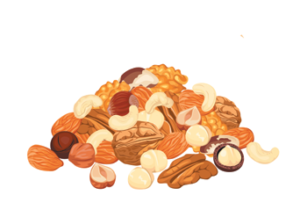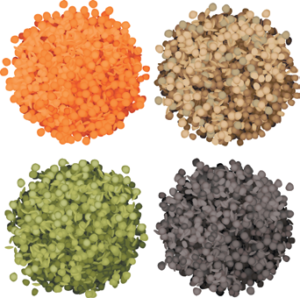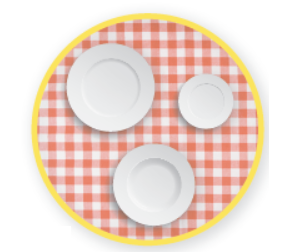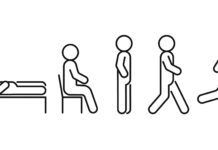We asked Tufts experts for one small change they would recommend for the biggest benefits. Here’s what they said:
1. Try Barley, not White Rice …
or any whole grain instead of any refined, really. Research shows choosing mostly whole grains and 100 percent whole grain products instead of refined grains is associated with many health benefits, including lower risk of cardiovascular disease, type 2 diabetes, cancer, and digestive disorders like constipation.

Refining grain strips away the fibrous bran and nutrient-rich germ, leaving only the starchy endosperm. Without the fiber, the remaining carbohydrates are rapidly digested and absorbed, and can cause spikes in blood sugar. White flour and the many products made from it (like white bread, desserts, pastries, and many cereals and crackers), white rice, and rice flour are examples of refined grain foods. Whole grains include delicious and versatile options like barley, brown rice, buckwheat, bulgur, farro, freekeh, oats, quinoa, spelt, wheat berries, and minimally processed products made from these and other grains.
Nicola McKeown, PhD, is an associate professor at the Friedman School and a scientist on the Nutritional Epidemiology Team at the Human Nutrition Research Center on Aging (HNRCA). Dr. McKeown is internationally renowned for her research examining the role of whole grains in promoting health.
2. Trade in Nuts for Croutons


Replacing refined carbohydrate foods like croutons, chips, and refined-grain crackers with nutrient-rich nuts or seeds is a great way to get a boost of healthy fats, fiber, vitamins, minerals, and phytochemicals along with the crunch you’re craving. Dietary patterns that routinely include nuts are associated with a lower risk of developing high blood pressure, cardiovascular disease (CVD), and cancer, and evidence from clinical trials has suggested eating nuts, when they replace refined carbohydrate foods, may improve cholesterol and triglyceride levels, insulin resistance, and oxidative stress. When including nuts in your diet, remember to substitute, not add.
Alice H. Lichtenstein, DSc, executive editor of Tufts Health & Nutrition Letter, is senior scientist and director of the Cardiovascular Nutrition Laboratory at the HNRCA. Dr. Lichtenstein has been involved in the development of many dietary recommendations, including vice-chairing the 2015-2020 Dietary Guidelines for Americans Committee.
3. Swap in Lentils for Ground Meat


Replacing some (or all) animal protein with plant protein is a smart swap. Dietary patterns that maximize healthy plant-derived foods and minimize animal-derived foods are consistently associated with lower risk of diseases like CVD and type 2 diabetes. One-quarter cup cooked lentils is the protein equivalent of one ounce of beef, lamb, pork, poultry, or fish, and lentils provide fiber, potassium, folate, and antioxidant polyphenols along with that protein. Try lentil soup or lentil-based salads, or replace some or all of the meat in chili, tacos, and burritos, for example. Beans and soy products are also excellent swaps for red meat and other animal proteins.
4. Cook at Home instead of Eating Out


Preparing food at home gives you more control over food quality as well as portion sizes and is the best way to ensure you reach your goals for a healthy dietary pattern. With a little practice and the right guidance, anyone can put together a fresh, home-cooked meal in a reasonable amount of time. Choose simple recipes, cook extra and freeze for future meals, repurpose leftovers to make the next day’s lunch and dinner easier, and take advantage of pre-prepped foods (like frozen or pre-cut veggies) to save time.
5. Flip Fruit Garnish to “Fruit Forward”


Instead of eating chocolate cake with a strawberry on top, opt for strawberries dipped in chocolate (or sliced strawberries sprinkled with dark chocolate shavings or mini chips). This “dessert flip” works for other meals as well. How about a bowl of fruit sprinkled with cereal instead of a few slices of fruit on your bowl of cereal? The fiber in fruits slows the digestion and absorption of the sugars, so fruit is much less likely to spike your blood sugar than most other sweet choices.
6. Choose Crunchy Produce, not Chips


When the urge for something crunchy strikes, go for carrots dipped in a little ranch dressing instead of ranch flavored extruded chips, or apple slices with nut butter in place of peanut butter stuffed pretzels. Research consistently associates higher intake of fruits and vegetables with lower risk of chronic disease (and higher intake of refined carbohydrates and ultraprocessed foods with higher risk).
7. Swap Exercise you Hate for Movement you Love


Physical activity does not have to be regimented to be beneficial. Engage in joyful movement: find an activity you enjoy that gets you to move your body. Dance, hike, bike, walk, or garden on your own or with others, or find friends for golf, tennis, pickle ball, or any other sport you enjoy.
8. Choose Small Plates over Big Plates


We have been conditioned to clean our plates. Add that to the fact that we tend to base our satisfaction on volume of food rather than calories, and you have a recipe for overeating. But we can exploit these tendencies. A portion that fills a small plate is likely to be more satisfying than the same portion sitting in the middle of a big plate. Choosing smaller plates, bowls, cups (and pizzas) is a great way to cut back on portion sizes without feeling cheated.
9. Try a Walk instead of a Snack


We eat for many reasons besides hunger. We may be bored, tired, or stressed, for example, or simply conditioned to grab that afternoon snack. If your tummy is not rumbling, try a walk or other activity instead of a snack. Activity can boost energy, alleviate boredom, and reduce stress (and it’s great for your mental and physical health).
10. Use the Stairs, not the Elevator


Research is clear that getting moving is good for your health—and even more so if it replaces sedentary time. Taking the stairs instead of the elevator or escalator, parking farther away from your destination instead of looking for a spot by the door, and using commercial time to do a small chore like taking the trash out or switching the laundry are small things that can add up.
Here is a summary of our experts’ tips for making small changes with big health impact:
- Replace most refined grains with whole grains.
- Try nuts instead of refined carbohydrates like croutons or chips
- Choose plant proteins instead of some (or all) animal proteins
- Cook at home more often and eat out/take out less
- Make fruit the star of the show, rather than a garnish
- Choose crunchy produce instead of crispy chips
- Find movement you enjoy
- Use smaller plates, bowls, and cups to control portions
- Consider if you are really hungry when the urge to snack hits
- Find ways to add more movement to everyday activities


























These are all fantastic suggestions to shift from diets that risk our health to those for balance and longevity. By adopting similar strategies, I have found a weight loss path that helped me shed 55 lbs in five years. Commit to these changes and you can be satisfied and empowered with energy, losing needless inflammation in your body, your temple.